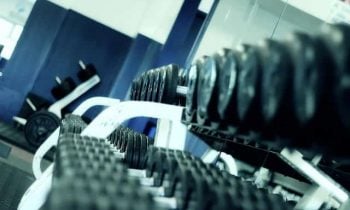Pilates is one of the biggest fitness trends of the past few decades. It is a callisthenic physical fitness regime, much like yoga is. Although initial claims described Pilates as a way of fighting numerous physical ailments and alleviating pain, the truth is that it is useful, but not magical. Pilates will help you to build up muscle tone, improve joint flexibility, and develop a better sense of balance. All of these benefits are actually great for people over the age of fifty, when those three areas begin to suffer naturally. A healthy Pilates routine could help you stay healthy and active for longer.
Because you are regularly testing your strength, flexibility, and balance when doing Pilates, we strongly recommend that you start out with a course, or a personal trainer. Pilates in and of itself isn’t dangerous, but it can be difficult to master, and some of the poses may prove challenging to someone who is not in good physical shape or who has a physical ailment. An instructor ought to be able to present you with some safe and beneficial poses, and to help you develop your strength, balance, and flexibility in a way that suits your body.
Pilates is a great beginner exercise in that it requires little physical preparation, and not much financial investment either. You don’t need to be very fit, and all you need to invest in at first is a few courses and some loose-fitting, but not baggy, exercise clothes.
Pilates professionals have strong recommendations as to Pilates for people over the age of fifty. On the one hand, three moves are particularly recommended. The Kneeling Rear Leg Raise is considered one of the best for developing balance. You start out very secure, with your weight evenly balanced between your elbows and knees, and then stretch one leg out backwards slowly. You put that leg back down and do the movement again with the other leg. As all your weight is evenly supported, you are near the ground, and you are moving slowly and steadily, this exercise is really great for core strength and balance development in absolute beginners. It helps to develop the muscles around your hips and legs, improving balance. And it is very safe!
Another recommended exercise for older people is Side Circles. Laying on your side, extend your leg towards the ceiling. Do not lift your bum off the ground, or you will fold your spine, which is not advised for people over fifty practicing Pilates. Move your leg clockwise and counter clockwise in small circles. Swap sides so you’ve done it with both legs. This exercise improves hip mobility, leg strength, and balance. As you are flat on the ground, it is perfectly safe from falling, and extremely unlikely to cause injury.
Finally, The Mermaid is also strongly recommended for improving balance and strength in older Pilates beginners. You start sitting on the mat with both legs folded to one side, say to your left. Your right hand rests on the floor, giving your body full support. You stretch your left arm up high, extending your spine, and stretch sideways. Do the movement gently and don’t push yourself too far. Slowly move back into the initial position. Your instructor may be able to teach you an alternative if your knees aren’t comfortable with the position. This exercise helps strengthen your back and improves your balance. It is also very safe as you are near the ground and your weight is supported.
On the other hand, Pilates instructors generally advise against spinal flexion Pilates exercises for people over the age of fifty, and completely agree that anyone with pre-existing spinal problems ought not to engage in spinal flexion Pilates. This is because half of all women and a large number of men over fifty have low bone density, which means that if we put pressure on the spine, there is risk of a fracture. Many people assume that all unweighted exercise is perfectly safe for people with frail bones and joints, but the reality is that any time you put pressure on a bone, even if it’s just your own body weight, you are challenging it. Spinal flexion is where you bend yourself at the back, folding your spine. Stretching your spine is absolutely fine: this doesn’t present a risk to your bones.


 GYM workout
GYM workout Caloric Intake for Over 50s
Caloric Intake for Over 50s Vitamin D for Over 50
Vitamin D for Over 50 Magnesium for Over 50
Magnesium for Over 50 Bodyweight exercises
Bodyweight exercises